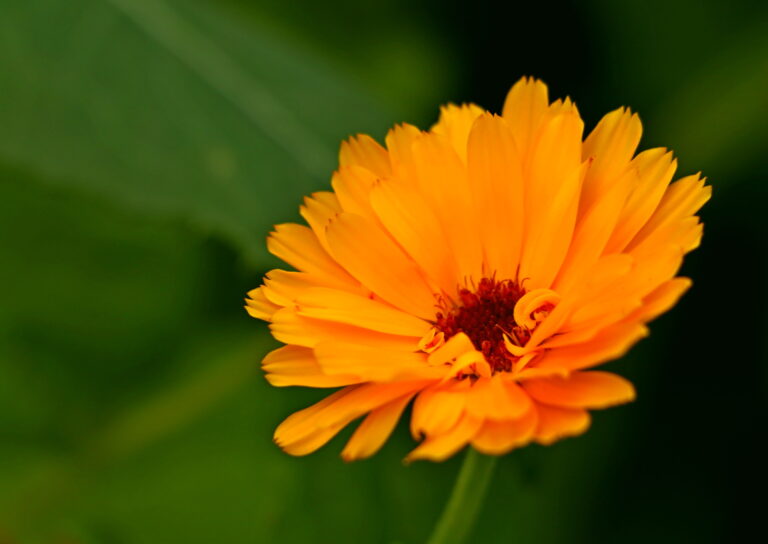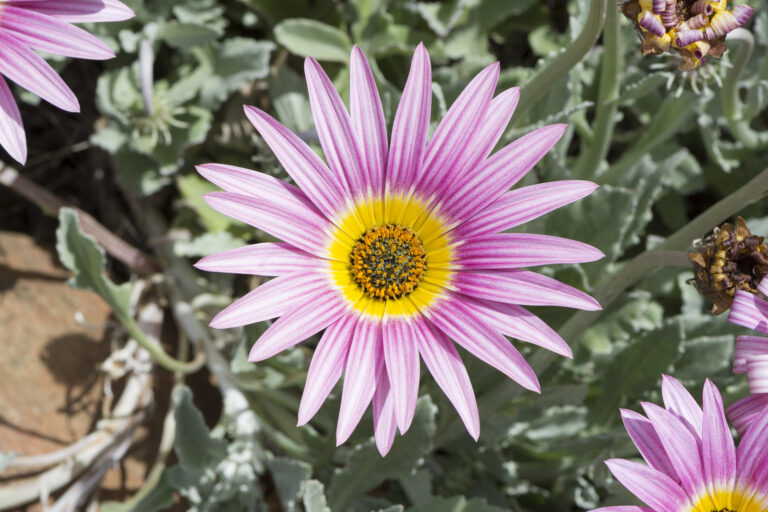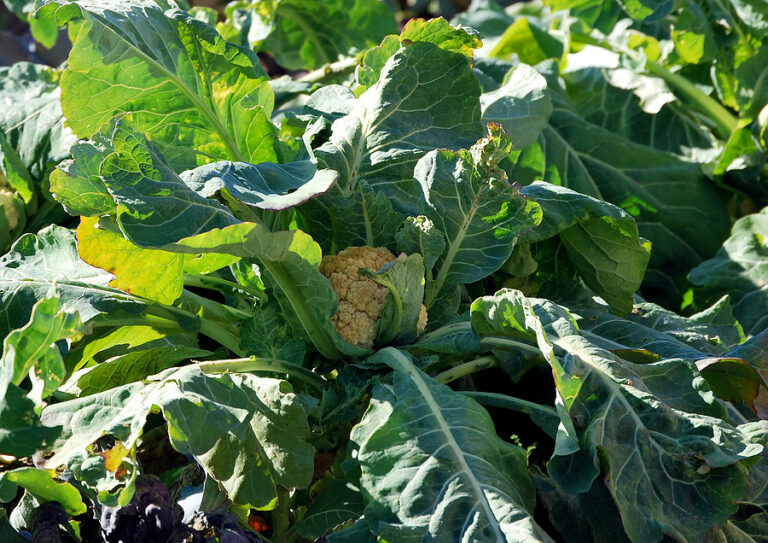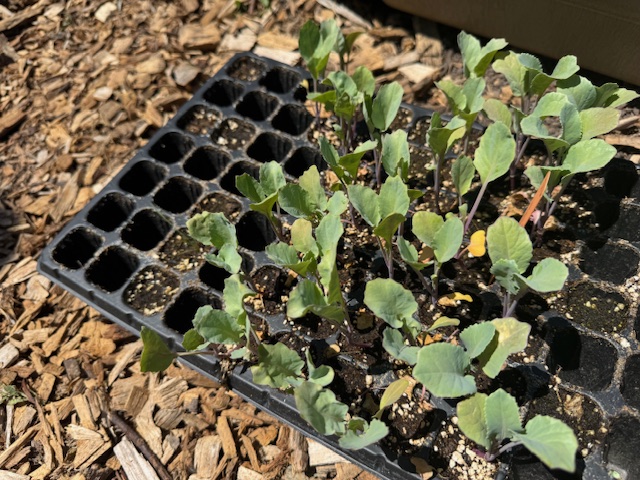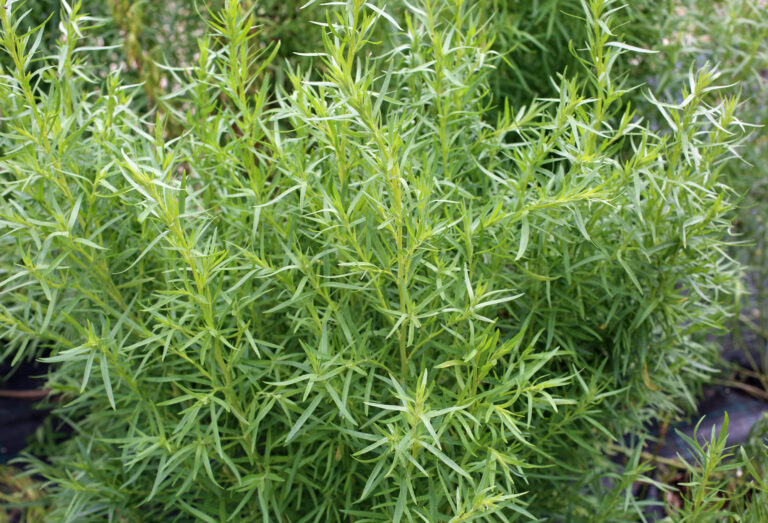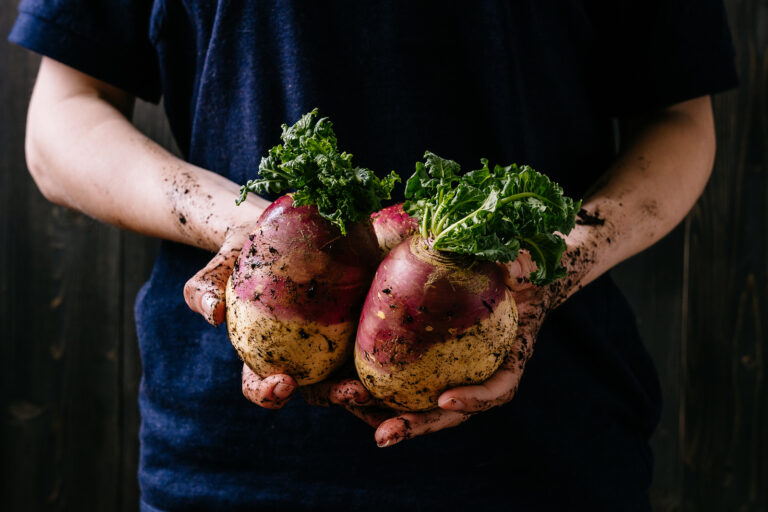How to Plant and Grow Artichokes
Artichokes are perennial plants. Artichokes prefer cool, moist summers and mild winters. The perennial artichoke plant will not survive where the ground freezes.
The artichoke is an edible thistle flower bud that is eaten before it opens. Artichokes are tender perennials that grow from 3 to 4 feet (.9-1.2m) tall and to 6 feet 1.8m) across.
Artichokes can be grown from seed or root divisions; they are most commonly grown from root divisions which are also called “crowns”. Sow seed indoors 8 to 6 weeks before the last spring frost. Set out root divisions or crowns in late winter or early spring, about 2 weeks before the last frost.
Good Products For Growing Artichokes
- Seed Starter Kit with Humidity Dome (120 Cells Total Tray)
- Gardzen 10-Pack 10 Gallon Grow Bags
- Captain Jack’s Dead Bug Brew
- Monterey BT Worm And Caterpillar Killer
- Bonide Fungal Disease Control
- Harris Neem Oil Plant Disease Control
- Freeze Protection Garden Mesh Netting Kit
- Kitchen Garden Grower’s Guide Vegetable Encyclopedia
- Vegetable Garden Almanac & Planner

Artichokes grow best where the average year-round temperature is between 50° and 60°F (13°-18°C). The middle coast of California is a prime artichoke-growing region. Avoid planting artichokes in areas with fewer than 100 frost-free days.
The edible part of the artichoke plant is the immature flower bud and its receptacle or base—often called the “heart.”
From seed, artichokes will produce edible buds in about 160 to 180 days. From root divisions called “crowns”, edible buds will come in 50 to 100 days. Artichokes can be grown as annuals from seed, but the most productive artichokes are perennials grown from crowns. The perennial artichoke plant can live for 5 to 15 years.
Artichoke articles of interest:
- How to Plant and Grow Artichokes
- How to Harvest and Store Artichokes
- Artichoke Growing Problems: Troubleshooting
- How to Cook and Serve Artichokes
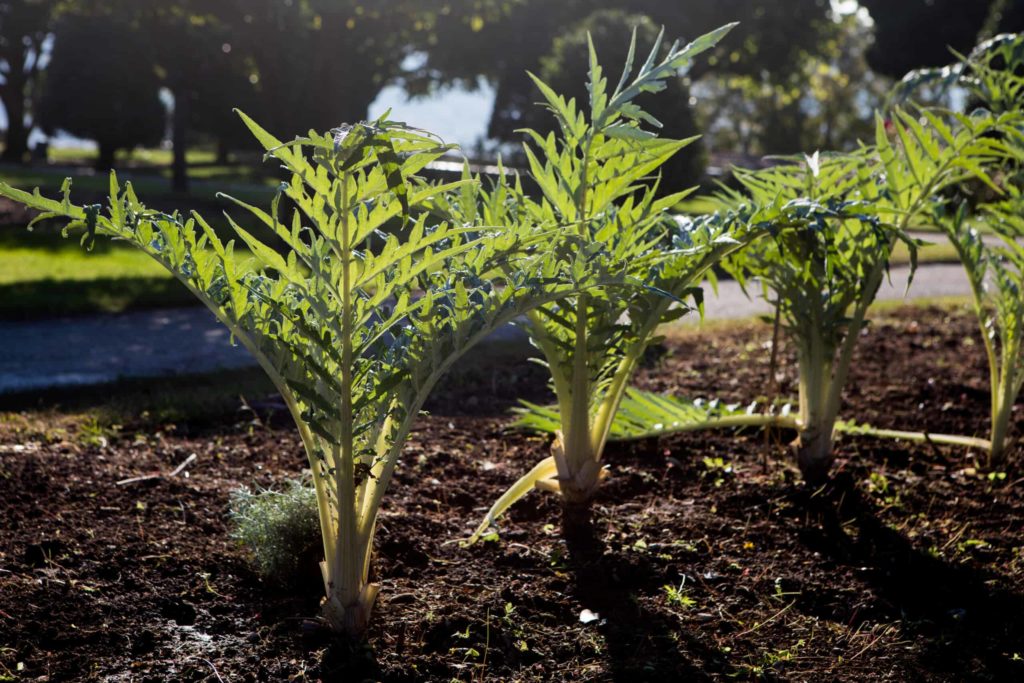
Artichoke sowing and planting tips
- Grow artichokes from seeds or crowns which are root divisions.
- Sow seed indoors 8 to 6 weeks before the last spring frost.
- Set out root divisions or crowns in late winter or early spring, about 2 weeks before the last frost.
- Sow seed ¼ inch (6 mm) deep in lightly moistened seed starting mix.
- The seed will germinate at 70-80°F (21-27°C) in 10 to 14 days.
- Transplant seedlings to the garden when plants are 6 to 8 weeks old and outdoor temperatures are at least 50°F (10°C) at night.
- Set out root divisions or “crowns” in late winter if the soil is easily worked or early spring about 2 weeks before the last frost.
- Each crown should have a viable section of root attached; plant the crown between 2 and 4 inches (5-10 cm) deep.
- Keep the growing medium or soil in which seeds or crowns are planted just moist until the plant is established.
- Space plants 6 inches (15 cm) apart in every direction; thin successful plants to 4 feet (122 cm) part.
- Fertilize with fish emulsion or a soluble complete fertilizer at half strength.
- Add aged compost to planting beds in advance of transplanting.
- Artichokes prefer a soil pH range of 6.0 to 6.8.
- Grow artichokes in full sun for the best yield.
- Plant artichokes in a dedicated bed; plants will live up to 15 years. In cold-winter regions, you may be able to grow artichokes as an annual.
Set out artichoke crowns or root divisions in spring about 2 weeks before the last frost.
Yield. Grow 1 or 2 plants per household member.
Where to grow artichokes
- Artichokes grow best where there are mild, frost-free winters and long, moist summers. (Artichokes are commonly grown along the central California coast and along the southern Atlantic and Gulf coasts.)
- The optimal growing temperature is not less than 50°F (10°C) at night and not more than 75°F (24°C) during the day.
- Do not plant artichokes where there are fewer than 100 frost-free growing days.
When to plant artichokes
- Plant artichokes on the average date of the last frost in late winter or early spring.
- Set your root divisions up to 2 weeks before the last frost.
- The optimal planting soil temperature is between 50° and 85°F (10-29.4°C).
Artichoke planting calendar
- 6-8 weeks before the last frost in spring: sow seed indoors.
- 2 weeks before the last frost in spring: set out crowns.
- 2 weeks after the last frost in spring: transplant seedlings into the garden.
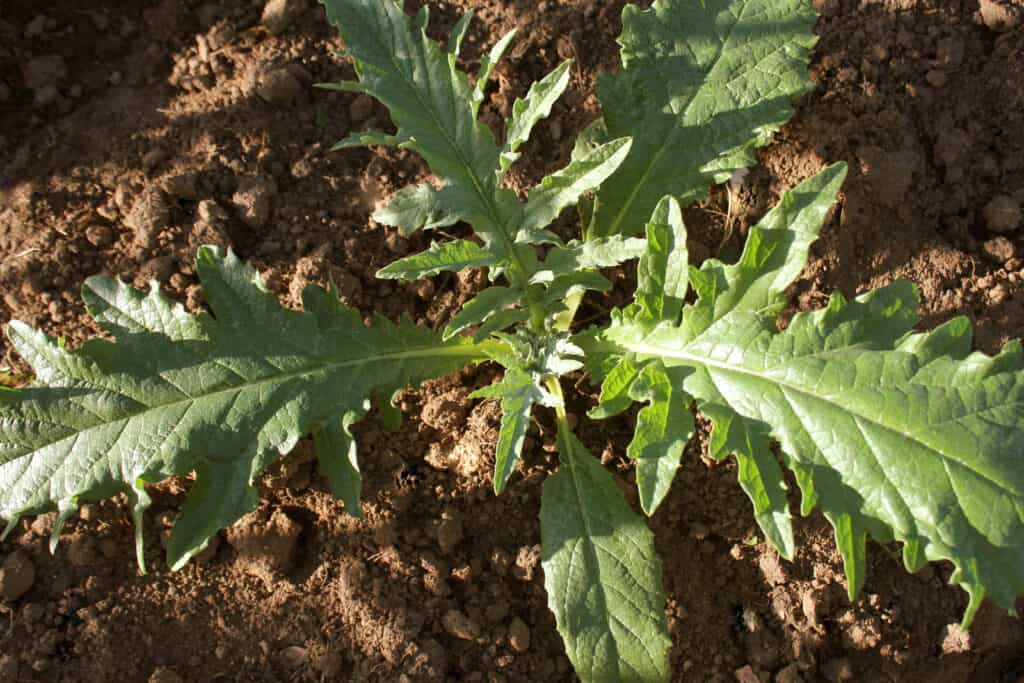
How to plant artichokes
- Grow artichokes from offshoots, suckers, or seeds.
- Plant artichokes in full sun.
- Artichokes require rich, well-drained, moisture-retentive soil with a soil pH between 6.0 and 6.8. Add compost and well-aged manure to planting beds in advance of planting.
- Set offshoots or suckers 3 to 4 feet (.9-1.2m) apart in rows about 6 feet (1.8m) apart.
- Sow seed ½ inch (1.25cm) deep; thin to 6 feet (1.8m) apart.
Watering and feeding artichokes
- Keep the soil evenly moist. Allow the soil to dry between watering.
- Add a low nitrogen fertilizer such as 5-10-10 to planting beds in spring and fall.
Artichoke companion plants
- Plant artichokes with other perennial vegetables such as asparagus.
Artichoke care
- Where the winter is cold, cut plants back to about 10 inches (25cm) and cover them with a box or basket, and then mulch with about 2 feet (.6m) of straw or leaves to help maintain an even soil temperature.
- Artichokes bear best the second year and should be started from new plants every 3 to 4 years.
Container growing artichokes
- Grow artichokes in large containers at least 36 to 40 inches (91-101cm) wide.
Artichoke pests and diseases
- Aphids and plume moths attack the artichoke.
- The plume moth is a problem in heavy artichoke-growing districts. Hose off aphids.
- Crown rot may infect plants covered in winter. Do not place mulch until the soil temperature drops to 40°F (4.4C). Remove mulch as soon as the weather begins to warm.
- Plant disease-resistant varieties when they are available.
- Avoid handling plants when they are wet.
- Remove infected plants and destroy them.
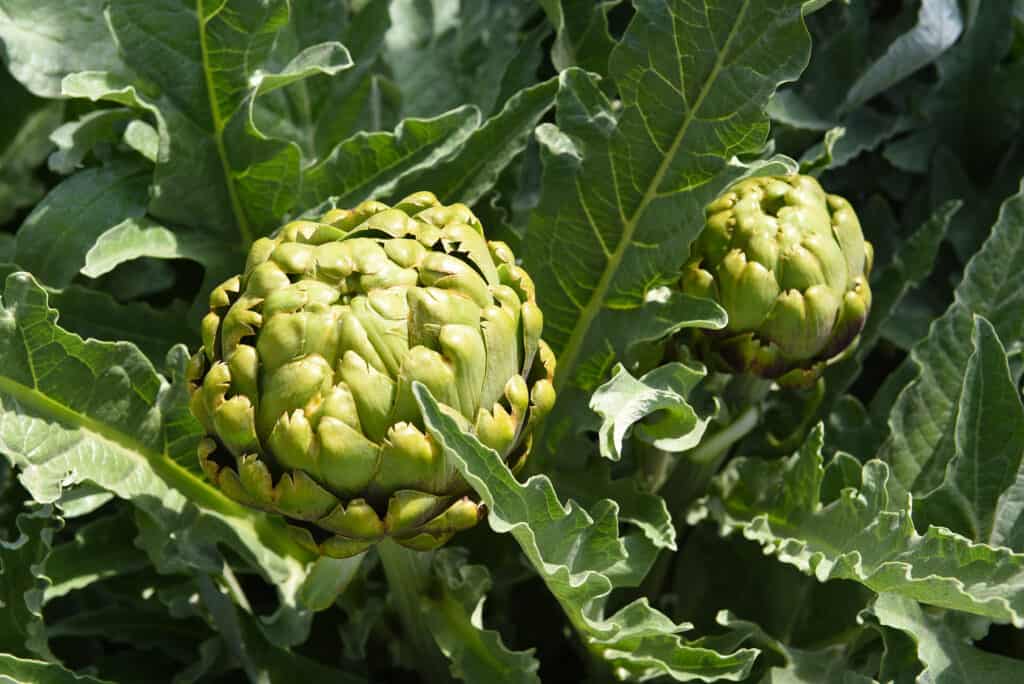
Artichoke harvest
- Artichokes are harvested beginning the second year.
- Cut buds about the size of an apple before they open. Cut stems 1½ inches (3.8cm) below the bud.
More at How to Harvest and Store Artichokes.
Storing and preserving artichokes
- Artichokes will keep in the refrigerator for up to one week.
- Artichoke hearts can be frozen after cooking, canned, or pickled.
Artichoke varieties to grow
- ‘Green Globe’ is ready for harvest usually the second summer after seeding.
- ‘Imperial Star’ produces the first season, about 180 days from seed to harvest.
- ‘Violetto’ has purplish, elongated buds.
About artichokes
- Common name. Artichoke, globe artichoke
- Botanical name. Cynara scolymus
- Origin. Southern Europe, North America
Artichoke articles on Harvest to Table:
How to Plant and Grow Artichokes
How to Cook and Serve Artichokes
Artichokes and Mint Side Salad
Artichokes Steamed and Stuffed
Three Artichoke Dipping Sauces
Artichoke Growing Problems Troubleshooting
How to Plant and Grow Jerusalem Artichokes – Sunchokes
Jerusalem Artichoke – Sunchoke Plant Starting Tips
How to Harvest and Store Jerusalem Artichokes – Sunchokes
Five Ways to Cook and Serve Jerusalem Artichokes – Sunchokes
Grow 80 vegetables and herbs: THE KITCHEN GARDEN GROWERS’ GUIDE
Garden Planning Books at Amazon:
- Tomato Grower’s Answer Book
- Vegetable Garden Almanac & Planner
- Kitchen Garden Grower’s Guide Vegetable Encyclopedia
- Vegetable Garden Grower’s Guide
More how to grow articles:
Learn how to plant, grow, and harvest your favorite vegetables. Click below for all you need to know.
- Artichoke
- Arugula
- Asparagus
- Beans, Snap
- Beets
- Broad Beans
- Broccoli
- Brussels Sprouts
- Cabbage
- Cantaloupe — Melons
- Cardoon
- Carrots
- Cauliflower
- Celeriac
- Celery
- Chard
- Chayote Squash
- Chickpeas
- Chicory
- Chinese Cabbage
- Collards
- Corn Salad
- Corn, Sweet
- Cresses
- Cucumbers
- Eggplant
- Endive and Escarole
- Fava Beans
- Florence Fennel
- Garbanzo Beans
- Garlic
- Horseradish
- Jerusalem Artichoke
- Kale
- Kohlrabi
- Leeks
- Lettuce
- Lima Beans
- Melons
- Mizuna
- Mustard Greens
- New Zealand Spinach
- Okra
- Onions
- Parsnips
- Peanuts
- Peas
- Peppers
- Potatoes
- Pumpkins
- Radicchio
- Radishes
- Rhubarb
- Rutabaga
- Salsify
- Shallots
- Sorrel
- Southern Peas
- Soybeans
- Spinach
- Squash, Summer
- Squash, Winter
- Sunchokes
- Sweet Potato
- Swiss Chard
- Taro
- Tomatillo
- Tomatoes
- Turnips
- Watermelon
- Zucchini


